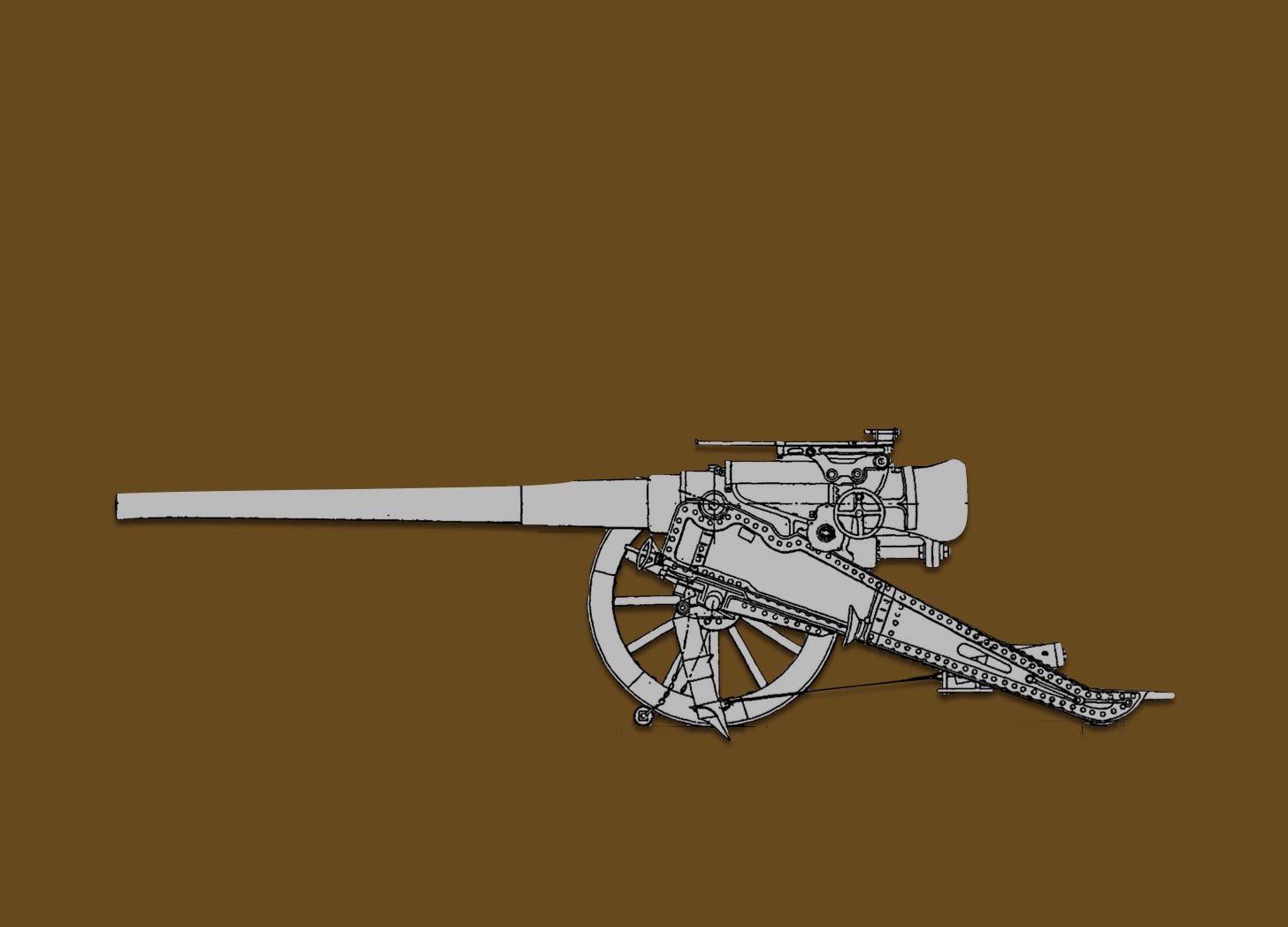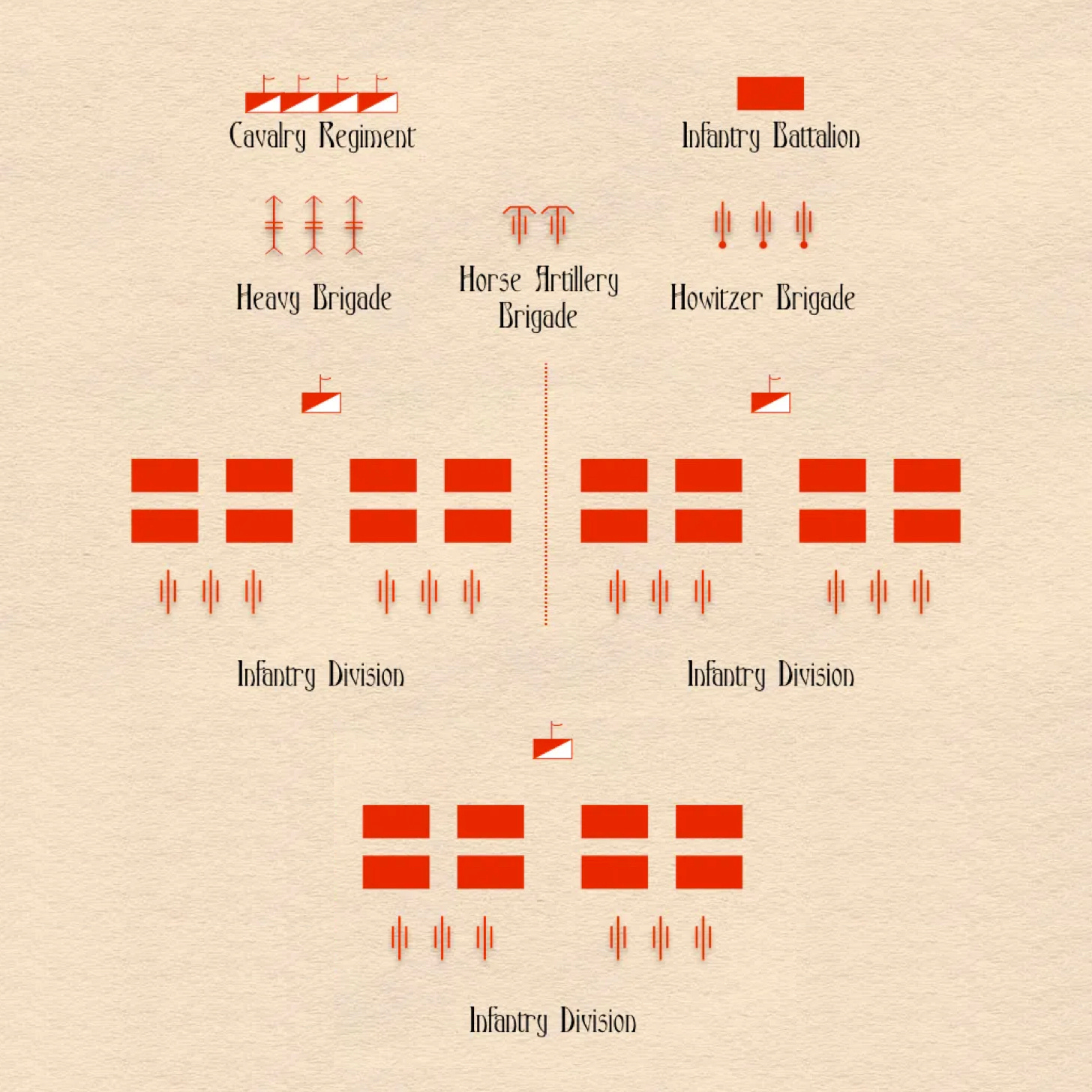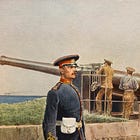Early in 1901, St. John Brodrick, then serving as the secretary of state for war of the United Kingdom, announced a plan for organizing the mobile military forces stationed in the British Isles into permanent formations. According to this scheme, most of combatant units of the Regular Force, as well as the best of the units composed of part-time soldiers, would find themselves assigned, in time of peace as well as time of war, into one of six new army corps.1
When formed, each army corps received three small infantry divisions, each of which consisted of eight battalions of infantry, six batteries of field artillery, and a squadron of mounted troops. An army corps also rated non-divisional units - a regiment of cavalry, a spare infantry battalion, and three ‘brigades’ of mobile artillery. (At this time, a unit of mobile artillery that corresponded, in size and dignity, to an infantry battalion or cavalry regiment, bore the title of ‘brigade’.)
The first of the non-divisional artillery brigades of an army corps consisted of three batteries of the Royal Field Artillery, each of which was armed with 5-inch howitzers. The second brigade rated two batteries of Royal Horse Artillery. The third, composed of three mobile heavy batteries, employed 4.7-inch guns.
Of the eighteen heavy batteries needed to fill out the new army corps, nine came from the Volunteer Force. In particular, they were formed by providing existing position batteries - which had lacked organic transport - with horses, limbers, wagons, and teamsters.
According to the plan laid out by Mr. Brodrick, the remaining heavy batteries were to have come from the Regular Force. Of these, six were to have been created by the conversion of coast artillery companies stationed in the British Isles and three found during the re-allocation of forces that was bound to follow the end of the war in South Africa.
In the years that followed the promulgation of the ‘army corps scheme’, the War Office proved unable to form the last three of the Regular heavy batteries. Thus, in 1907, when a new secretary of state for war proposed a second metamorphosis of the British Army, the Regular Forces at home possessed but six heavy batteries, all of which were armed with 4.7-inch guns.
Detailed descriptions of the ‘army corps schemes’ can be found in Gerald Ellison ‘Reminiscences (XVI)’ The Lancashire Lad (November 1935) page 5 and John K. Dunlop The Development of the British Army, 1899-1914 (London: Methuen, 1938) pages 130-140. (The link will take you to the Internet Archive.)








